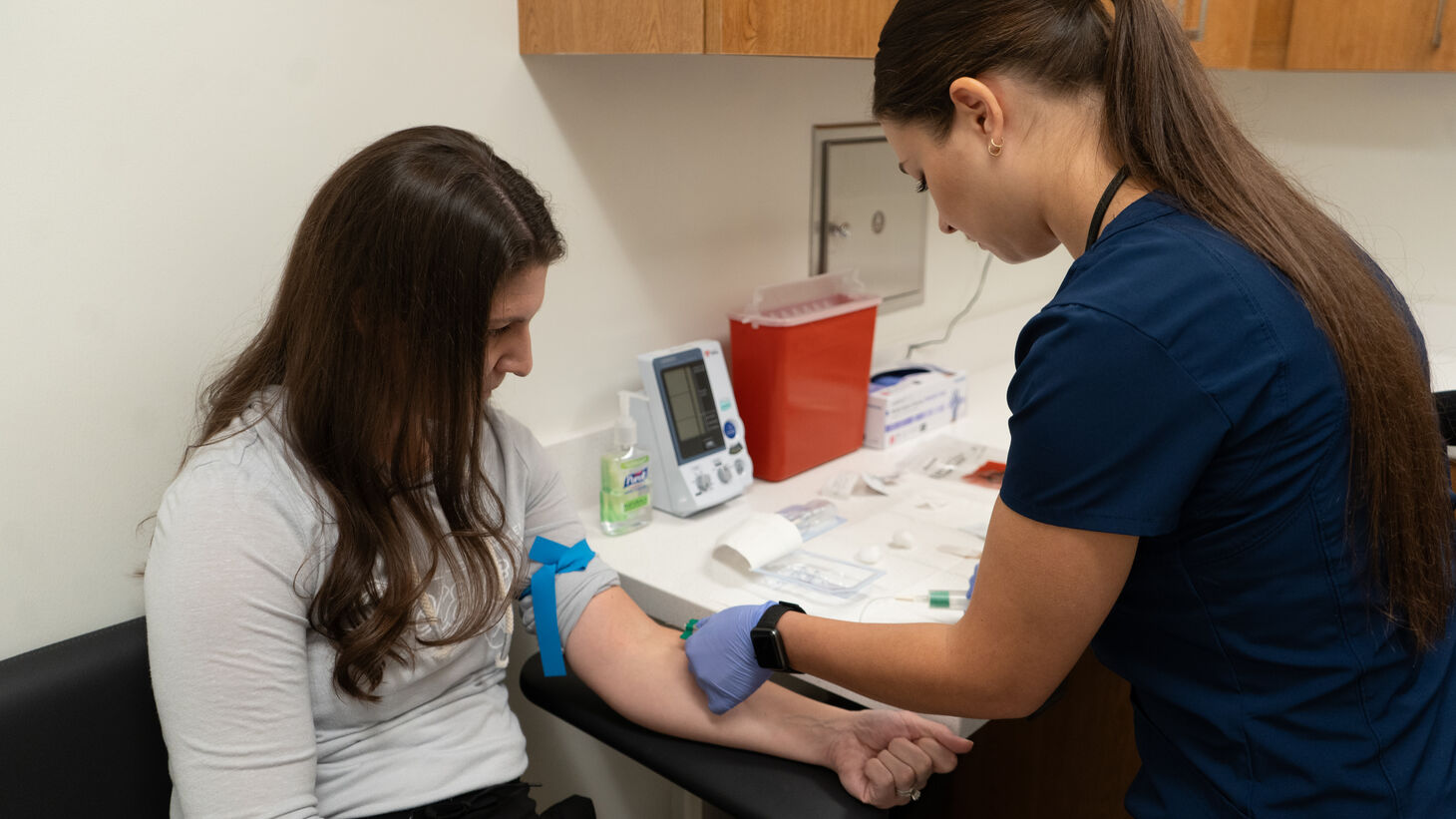Test developed at The Ohio State University examines how immune cells react to common challenges during pregnancy
NOTE TO EDITOR: Multimedia elements available for download: bit.ly/48ShnuH
A new blood test developed at The Ohio State University College of Nursing – in collaboration with The Ohio State University Wexner Medical Center – is the first of its kind to potentially predict the risk for preterm birth in early pregnancy, one of the leading causes of childhood death worldwide.

The test was developed after a team led by Shannon Gillespie, PhD, RN, FAAN, assistant professor at Ohio State’s College of Nursing and researcher through the college's Martha S. Pitzer Center for Women, Children and Youth, studied risk factors for preterm birth, including stressors such as early life adversity and experiences with racial discrimination. They learned that key risk factors for preterm birth such as persistent stress, poor sleep, depression and anxiety can subtly change how the immune system works over time. Those dangerous changes to immune function can be measured with a simple blood test, using less than a teaspoon of blood.
“We’re essentially trying to create this ‘crystal ball’ of future events,” said Gillespie. “We are truly producing a future likely scenario early in pregnancy. And so, if the body’s not responding in the right way, we can see that.”
“We don’t want anyone to have to get sick; we don’t want anyone to have to have contractions. We want to say, ‘How will you handle these things?’ If it’s a way that we know is linked to the risk, then let’s do something about it,” said Gillespie.
The World Health Organization reports that more than 15 million babies are born prematurely every year, and more than a million of them do not survive. Approximately 70% of cases of preterm birth happen spontaneously without a medical need. Black mothers are also twice as likely to give birth early compared to white mothers for unknown reasons.

Ebony Wilson understands the power of knowledge and understanding potential risks during pregnancy. When she first got pregnant, she figured she did not have any complications. But Wilson and her husband lost their son when she unexpectedly went into labor at just 20 weeks. She said knowing their risks can help women take action and seek proper care and support.
“If a blood test is going to report whether I’m a high-risk pregnancy, low-risk pregnancy or anything in between, that is just a great nugget for me to know so that I can process in my pregnancy the proper supports that I need to stay pregnant and be happy in my pregnancy and enjoy this,” said Wilson. “Because giving life is to be enjoyed as best as possible.”
Preventative measures helped Wilson in her second pregnancy; although her daughter Ava was born early at 23 weeks, she survived and is thriving today.
Preliminary tests of the blood test show the potential to predict preterm birth risk with considerable accuracy – up to 97.5 percent. Gillespie said this test can be used in what is known as the “prenatal battery,” which is designed to help clinicians identify what appears to be increasing a patient’s risk for preterm birth, setting the stage for prevention before a patient experiences a single sign or symptom.
“It should feel as simple as a test for anemia,” said Gillespie. “So things that can be available for everyone that’s interested.”
Gillespie and her team are working on a $2.3 million grant from the National Institutes of Health/National Institute of Child Health and Human Development to put the new blood test through an expanded and comprehensive study to make sure it works just as accurately in large groups of patients. They are also working to identify ideal treatments to “reset” the body’s immune responses to normal levels.
“It’s all about the patients and their families. They are my inspiration, my reason for persevering and staying committed to this pursuit of knowledge,” said Gillespie. “I’m hopeful that this study will lead to a future where all moms are cared for with great thought and consideration and all babies have more time with mom – including that precious time in the tummy.”
National media coverage
Ohio State Health and Discovery
Forbes' "Discovery of the Week"
Parents.com
WKRC-TV Cincinnati
ClickonDetroit.com
Newswise
Medical Dialogues


